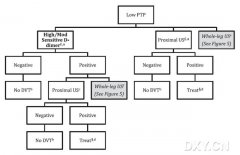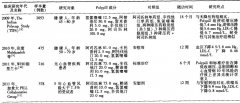读医学网
2012年AAN、CNS循证指南更新:婴儿痉挛的药物治疗
发布时间:2014-05-19 10:34 类别:神经系统疾病 标签:br possibly shortterm Level 来源:丁香园
Infantile spasms constitute a unique, age-specific epilepsy syndrome of early infancy characterized by epileptic spasms often accompanied by neurodevelopmental regression and an EEG finding of hypsarrhythmia. When all 3 components are present, the eponym “West syndrome” is commonly used. The incidence is 2–3 per 10,000 live births1,2; the lifetime prevalence rate is 1.5–2 per 10,000 children. Infantile spasms are slightly more common in males, and a family history exists in 3%–6% of cases. The spontaneous remission rate of infantile spasms described in limited natural history studies is 30%. A 2004 American Academy of Neurology (AAN)/Child Neurology Society parameter on the medical treatment of infantile spasms6 concluded that adrenocorticotropic hormone (ACTH) is probably an effective agent for short-term treatment of infantile spasms (Level B). The 2004 parameter also concluded that vigabatrin (VGB) is possibly effective for shortterm treatment of infantile spasms (Level C) and for
treatment of children with tuberous sclerosis (Level C). In children with infantile spasms and tuberous sclerosis, 2 Class III studies7,8 from the 2004 practice parameter (combined n 28) showed spasms cessation at 2–3 weeks in 16 of 28 (57%) patients treated with VGB, with overall response rate of 100% in both studies. Therefore, VGB is possibly effective for short-term treatment of infantile spasms in the majority of children with tuberous sclerosis (Level C). Data were insufficient at that time to recommend other antiepileptic drugs (AEDs), the ketogenic diet, pyridoxine, or IV immunoglobulin (IVIg) for short-term treatment of infantile spasms or to assess the impact of treatment on long-term outcomes.
In August 2009, the US Food and Drug Administration (FDA) approved VGB for use in infantile spasms and as add-on therapy for refractory seizures. Since 2004, only one study provided evidence higher than Class IV, a single large Class III randomized controlled trial (RCT) comparing low-dose and high-dose VGB for treatment of infantile spasms.
This study showed more patients in the high-dose group achieved spasms cessation within 14 days relative to those in the low-dose VGB group (15.9% vs 7%; p=0.03). In the symptomatic tuberous sclerosis complex (TSC) subgroup, the spasm-free rate was higher in those allocated high-dose VGB (25% vs 16.7%). A post hoc analysis video-EEG performed at any subsequent visit showed hypsarrhythmia resolution in 30.8% of patients on high-dose VGB vs 13.2% on low-dose VGB. Considerable variation remains in the management of infantile spasms. This is evident in the recently published US Consensus Report11 and the various responses it drew.12,13 The agents used, dosage regimen, and treatment duration vary significantly among studies, which remain limited to small numbers of prospective trials and even fewer RCTs. Most published outcome measures are short-term and based on small numbers of patients. These variable practice patterns in treating infantile spasms and 8 years of an emerging body of literature on the subject have necessitated an update of the 2004 parameter. Therefore, we reviewed the literature to update the guideline with recommendations to address the following clinical questions for which previous data were insufficient:
1. Are other forms of corticosteroids as effective as ACTH for short-term treatment of infantile spasms?
2. Are low-dose ACTH regimens effective for shortterm treatment of infantile spasms?
3. Is ACTH more effective than VGB for short-term treatment of infantile spasms?
4. Is there a role for the ketogenic diet or for AEDs other than VGB in managing infantile spasms?
5. Does the successful short-term treatment of infantile spasms lead to long-term improvement of
neurodevelopmental outcomes or a decreased epilepsy incidence?




